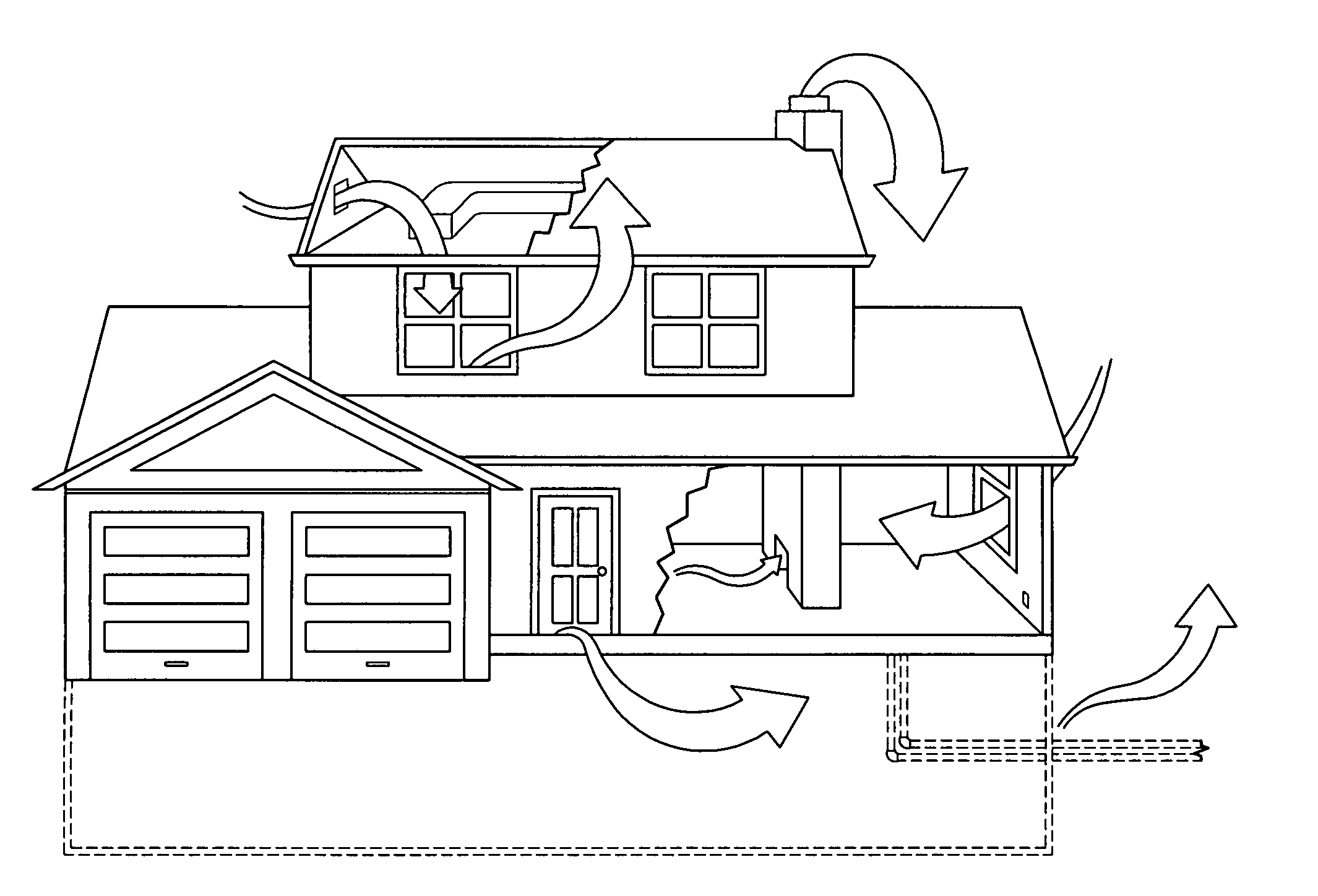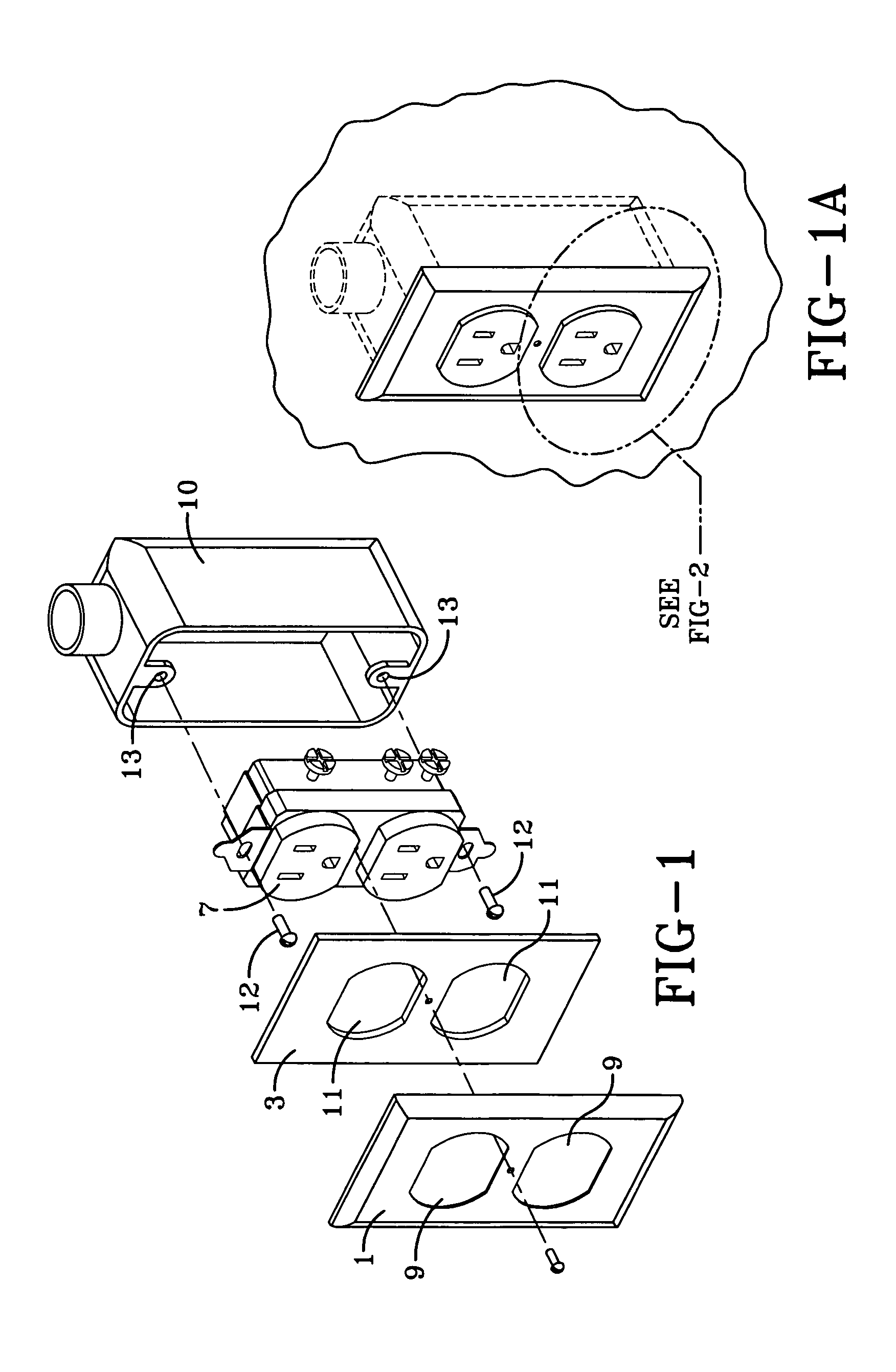With
thermal conduction, heat is lost through the exterior envelope or “shell” of the house.
Air infiltration is the uncontrolled leakage of air through these seal openings in homes or buildings and can account for a large part of heat loss in a typical home or building.
When discussing air infiltration and energy savings, it is actually a substantial portion of treated air in homes and buildings that is often wasted.
Due to the ever increasing cost of energy, this substantial portion of treated air which is wasted is having a larger and larger economic
impact on homeowners and building owners.
Likewise, properly dehumidified air can inadvertently leave the home or building, and air untreated for
humidity can inadvertently enter the home or building.
The drafts from outside that flow through the inside walls via electrical, cable, telephone and plumbing penetrations, leak through the interior outlets and switches which contaminate the treated air of a home or building.
Thus, sealing electrical penetrations are not seriously considered for reducing air infiltration.
Another problem besides air infiltration in a home or building is excessive indoor humidity.
Some new high efficiency air conditioners can contribute to excessive indoor humidity which can lead to unhealthy mold growth in homes.
Many new air conditioners simply do not remove the humidity that the old air conditioners did.
High levels of indoor mold can cause serious
health problems, including allergic reactions, toxic reactions,
asthma episodes, infections and respiratory damage.
Comfort inside a home or building also suffers when an air conditioner cannot control indoor humidity.
It is not uncommon for occupants in a home or building to find that they are not comfortable at various times of the day or cooling seasons.
Although the air conditioner is controlling the temperature, the indoor humidity is bouncing up and down, typically from 45% to 75%, which affects the comfort of a home or building.
When indoor humidity levels are too high, a person's
skin cannot evaporate
moisture as well, which leads to discomfort.
However, most homes or buildings are too leaky, which causes excessive
summer heat and humidity, dry air and cold drafts in the winter, creating uncomfortable rooms, excessive dust, and high heating and cooling bills year round.
These flexible
cellular sheet products or insulators are typically made of
petroleum products which are not environment friendly and cannot be recycled because they are not fabricated from renewable resources.
However, Close only discloses gaskets for electrical sockets and switches.
Therefore, preventing air infiltration can only be achieved by sealing all of the penetrations of an entire home, which is not taught or suggested by Close.
The reason for this is because no one has ever specifically measured the amount of air infiltration coming from these penetrations because it was thought to be insignificant.
Thus, no one bothered to expand or improve the product.
Thus, Close (which issued in 1979) combined with what is known in the art, does not teach or suggest sealing all of the penetrations of an entire home or building.
Furthermore, for almost 30 years, no one is believed to have attempted to focus on the result of sealing all electrical penetrations, since sealing electrical outlets appears to have only a very small effect on reducing air infiltration.
Thus, Close is silent on a process for sealing the entire home and lacks a device to seal all of the penetrations of a home or building.
Additionally, Close does not disclose the prevention of excessive indoor humidity and contaminated air from indoor and outdoor pollutants, which can have a significant
impact on the health of the individuals residing in a home or occupying building.
 Login to View More
Login to View More  Login to View More
Login to View More 


